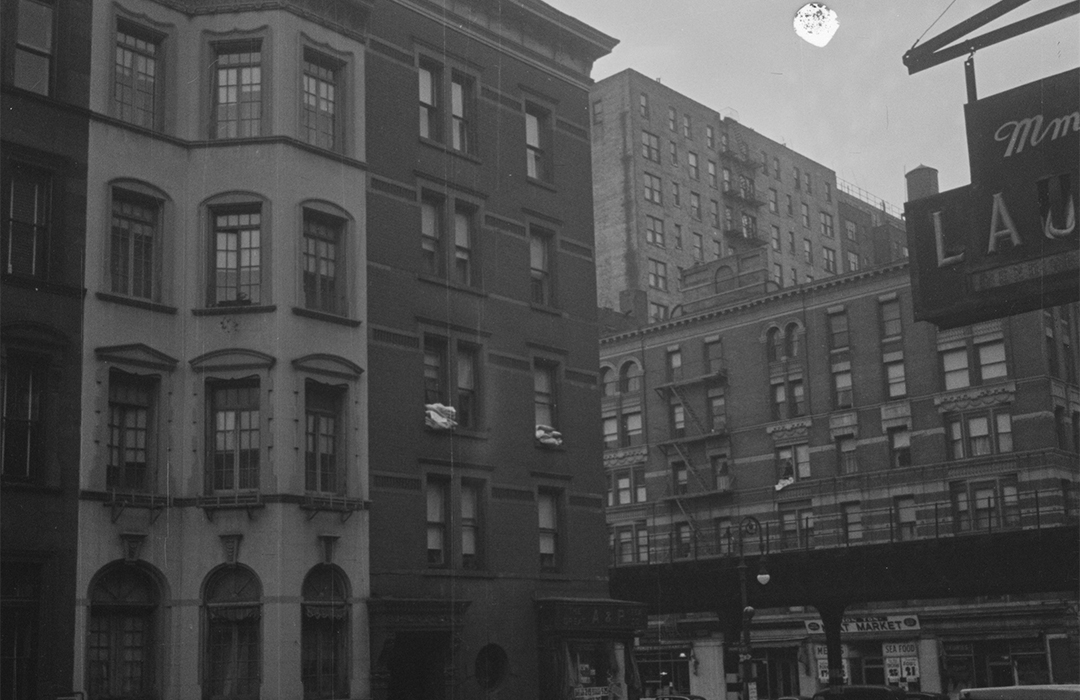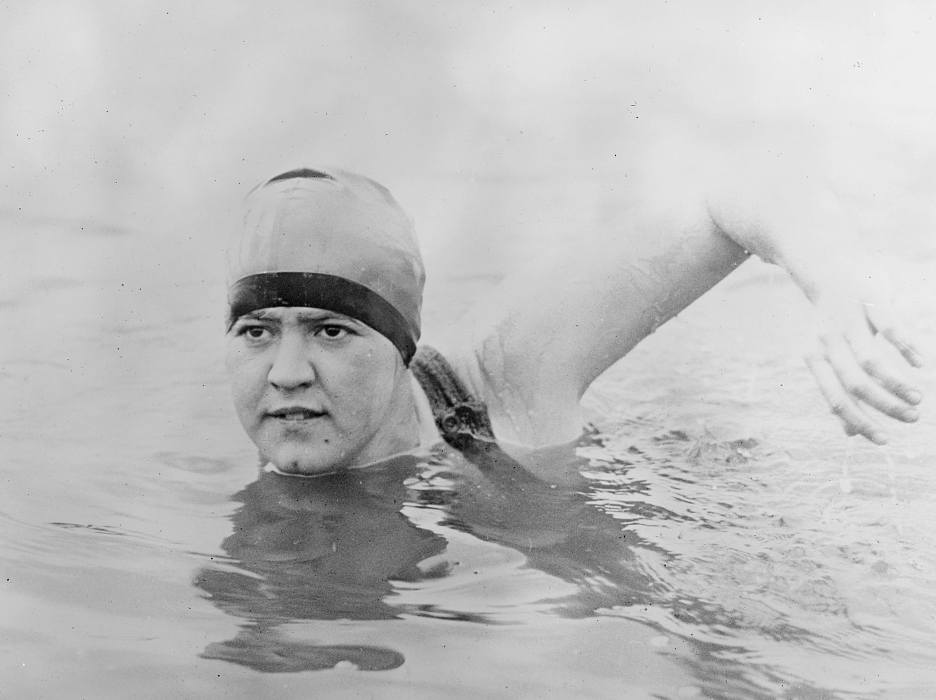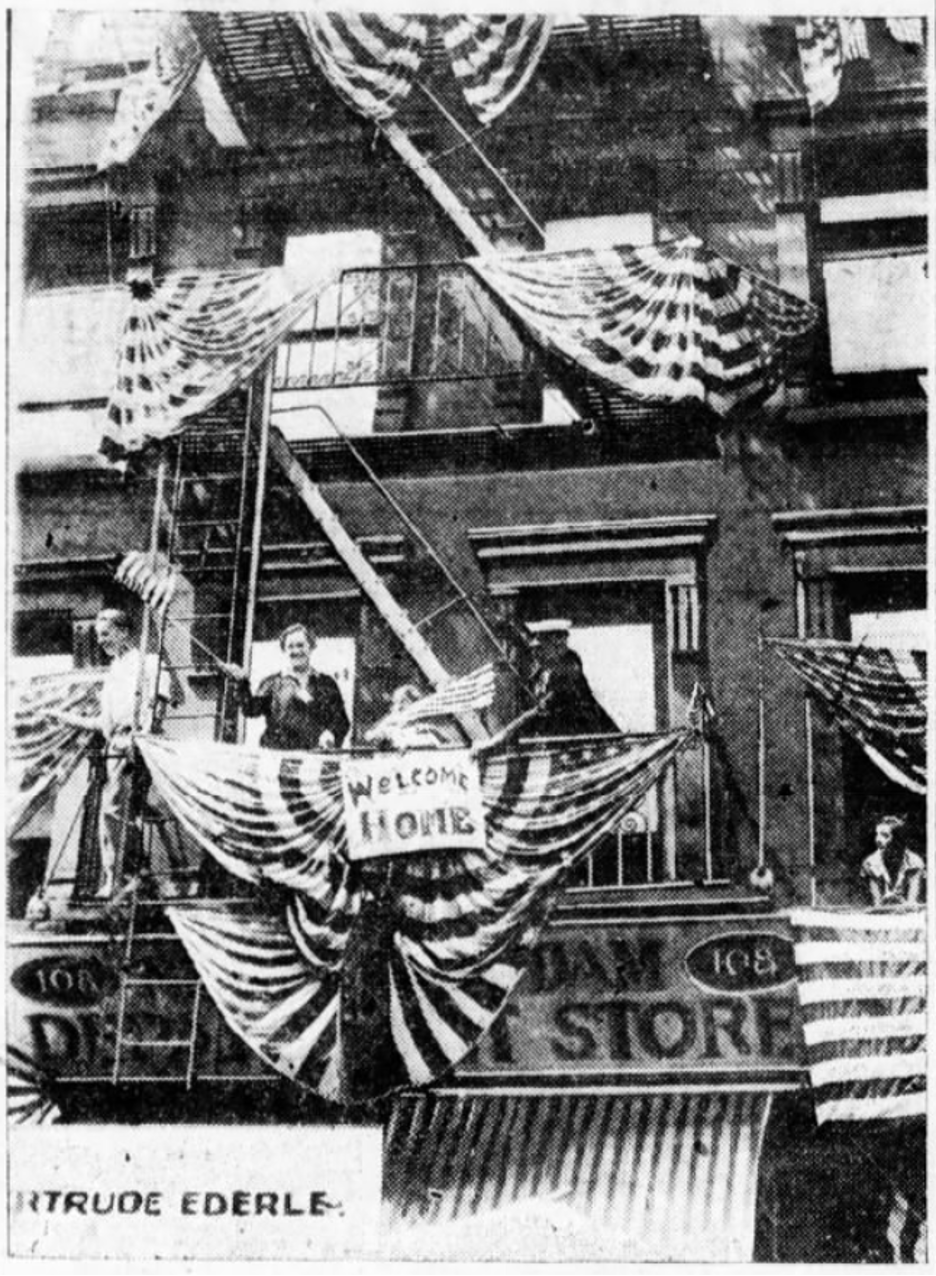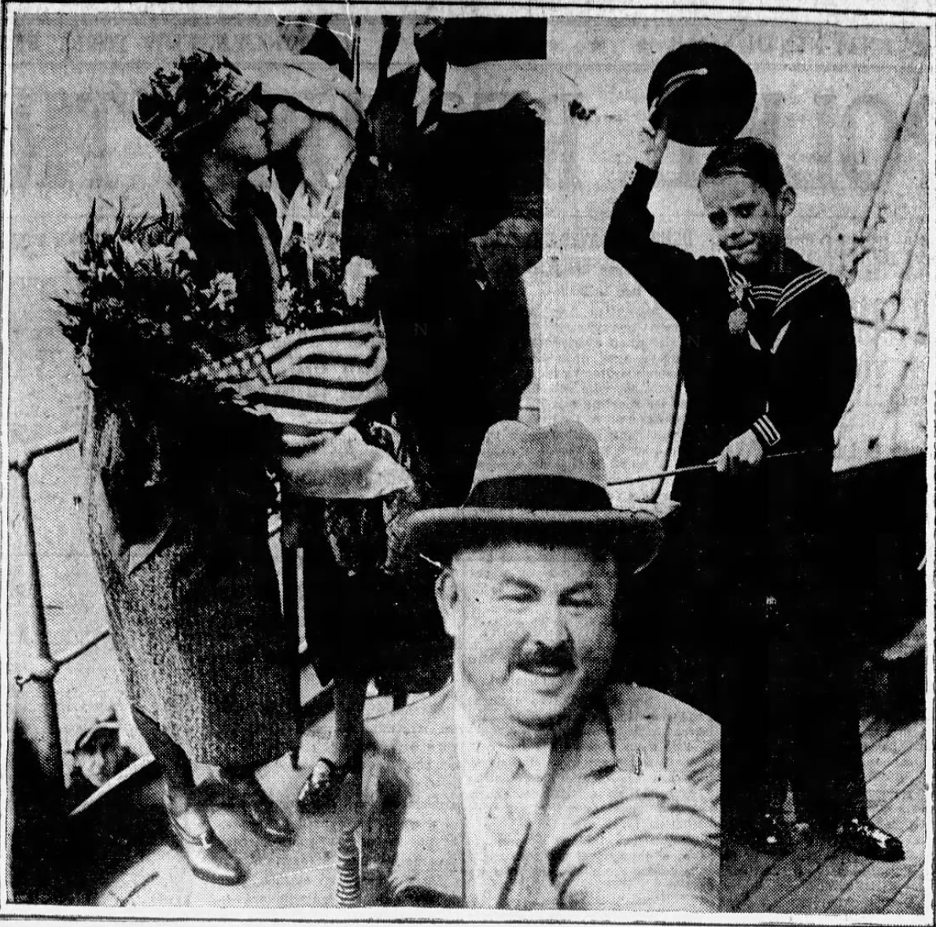
108 Amsterdam Avenue
by Jessica Larson
108 Amsterdam Avenue was once home to one of the area’s local and national heroes. The site’s most long-standing structure was built as a five-story and basement mixed use building. While a building is noted as existing on an 1879 map and it is possibly the same structure, the map isn’t clear enough to say for certain. The first fire insurance map that the building definitely appears on is from 1891. That same year, a tenant named Heloise Leroux made headlines; the thirty-eight-year-old French dressmaker, who lived on the building’s top floor, committed suicide following a bitter love triangle. Leroux had been a dressmaker for famous actress Sarah Bernhardt; she and another of Bernhardt’s dressmakers had fallen in love with the same French soldier, who declined to marry Leroux. Newspapers across the city published on the scandal, of particular interest to the public given the tangential tie to a contemporary celebrity.
In the 1900 Federal Census, twelve families are listed as living at the address. These tenants were made up of a mix of German families, several Irish families, families of native-born Americans, and English tenants. Occupations were consistent with those taken up by European immigrants; men were often day laborers, bakers, factory workers, or drivers. Some, however, were listed as holding slightly more financially lucrative white-collar professions, such as clerks or engineers. Most wives, though not all, were usually listed as home makers, indicating that the families that resided at 108 Amsterdam Ave were financially comfortable enough to not require two incomes.
Gertrude [Ederle] was actually born in the apartment above the butcher shop…
By 1910, the area, known widely as San Juan Hill at that point, had become predominantly Black. However, residential structures built along the avenues tended to be white-inhabited, whereas Black tenants clustered along the streets. In the 1910 Federal Census, a German family was still listed as residing at the address; this family, the Ederle family, possibly purchased the building. One of the residents listed is five-year-old Gertrude Ederle. She was the daughter of Henry and Gertrude Ederle, German immigrants who ran a butcher shop on the ground floor of 108 Amsterdam Ave; Gertrude was actually born in the apartment above the butcher shop, a common practice in early twentieth-century New York City, particularly for immigrants. As a child, her family summered in Atlantic Highlands, New Jersey, where Gertrude learned to swim in the ocean at age eight. She quickly discovered her love and aptitude for the sport and began to swim competitively. She first gained notoriety in 1917, when she set the record for the 880-yard freestyle, also becoming the youngest world record holder in swimming. In 1924, she won a gold medal at the Summer Olympics in Paris, as well as two bronze medals.
It was her success in 1926, however, that made Gertrude Ederle a national celebrity and hero. After a failed first attempt the year prior, she became the first woman to swim across the English Channel. Before her, only five men had accomplished the same feat, all of whom took longer than Ederle. Ederle’s time was 14 hours and 24 minutes, beating the previous time of 16 hours and 33 minutes. Upon her return, she was greeted with two massive ticker-tape parades, one of which was along Amsterdam Avenue, beginning at 108 Amsterdam, with an estimated two million people in attendance. The entire avenue was decorated in American flags and the scene was described as akin to Mardi Gras.
While Ederle’s accomplishment was considered a great American success, she was, and still is, hailed as an early champion of women’s sports. Before her, few female athletes had made such celebrated headlines. Recently, in 2024 the biographical film Young Woman and the Sea was released to critical acclaim. In what was previously San Juan Hill, a notable landmark still stands celebrating Ederle’s life. The Gertrude Ederle Recreation Center at 232 West 60th Street still serves the neighborhood. Although this facility was officially opened in 2013, the building previously served as the West 60th Street Public Bath, designed by architects Werner & Windolph and opened in 1906 as one of the city’s first public bath houses. This was part of larger reform initiatives to provide the poor with hygienic facilities in an effort to minimize the spread of infectious disease; as well, cleanliness was associated with moral betterment. Fittingly per the building’s later recognition of Ederle, this structure housed one of the city’s first “plunges,” or, what is more commonly considered a pool today.
108 Amsterdam Ave survived well into the mid-twentieth century. It was replaced, alongside the rest of the block, by the Fiorello H. LaGuardia High School of Music & Art and Performing Arts in 1984.
Before her, few female athletes had made such celebrated headlines.
Resources:
1900 United States Federal Census, New York, Borough of Manhattan Enumeration District 457, Election District 11, Ward 19, image 17/30. Familysearch.com.
1910 United States Federal Census, New York, Borough of Manhattan, Election District 1375, Ward 22, image 12/15. Familysearch.com.
“Gertrude Ederle Will Leave Amsterdam Ave.” The Roanoke Times. October 09, 1926: p. 12
Gray, Christopher. “When A Hot Shower Was A Frill.” New York Times. March 27, 2017. https://www.nytimes.com/2014/03/30/realestate/when-a-hot-shower-was-a-frill.html
“Home-Coming More Tiring than Swim, Says ‘Trudy.’” Times Union. August 28, 1926: p. 2
Miller, Donald L. Supreme City: How Jazz Age Manhattan Gave Birth to Modern America. Simon & Schuster. 2015.
“Miss Leroux’s Unexplained Suicide.” The Sun. November 04, 1891: p. 10
Salwen, Peter. Upper West Side Story: A History and Guide. Abbeville Press. 1989.
Trumbull, Walter. “Queen of the Waters.” Saint Nicholas: An Illustrated Magazine for Boys and Girls, Vol. 52. The Century Co., New York. 1926.
“Twice Disappointed in Love.” The Sun. November 05, 189: p. 5
Jessica Larson is a PhD Candidate in the Department of Art History, The Graduate Center, CUNY. She is also the Joe and Wanda Corn Predoctoral Fellow at the Smithsonian American Art Museum & National Museum of American History





